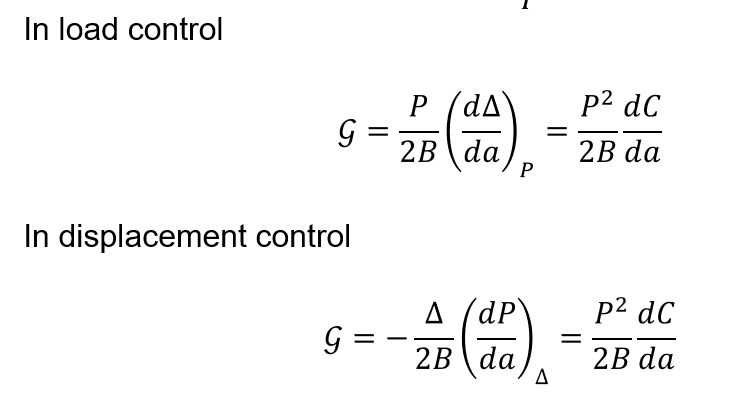L3- Fracture Resistance as Energy Release Rate
1/23
There's no tags or description
Looks like no tags are added yet.
Name | Mastery | Learn | Test | Matching | Spaced |
|---|
No study sessions yet.
24 Terms
Fracture energy in an ideal system
twice the surface energy ( must create 2 surfaces during fracture)
i.e. G = 2γ
Fracture energy, G
energy needed to propagate a crack
Equation for energy release rate, G
G = -dΠ/dA
A = area of crack plane ( 2aB)
B = width of plane
P=UE-F
Gc
measure of the fracture toughness of a material
Equation for Gc (Jm^-2)
Gc= dWs/dA = 2wf
Wf = fracture energy
When will crack growth occur ?
when G = Gc= 2wf
Conditions for stable crack growth
G=R
dG/da ≤ dR/da
, R = material resistance to crack extension
a = crack length
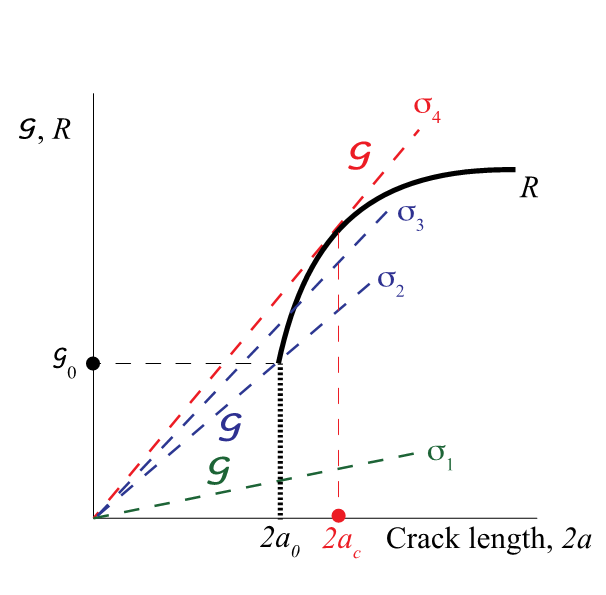
Conditions for unstable crack growth
dG/da > dR/da
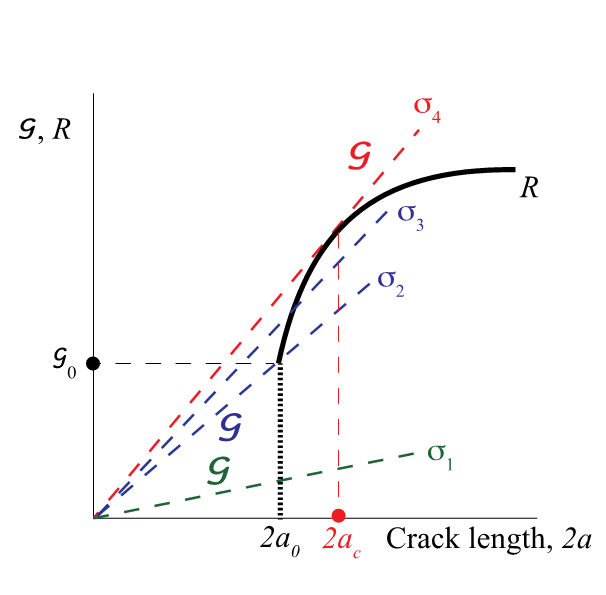
Assuming 2Wf = R:
Consider 2 possibilities:
R = constant + so independent of crack length
R increases as crack length increases

Case 1: R independent of crack size
If G below R, crack will not grow hence stable until Gc = reached, Gc = R
At σ2 fracture occurs + crack propagation = unstable i.e. G grows but R stays constant
2ao = defect size
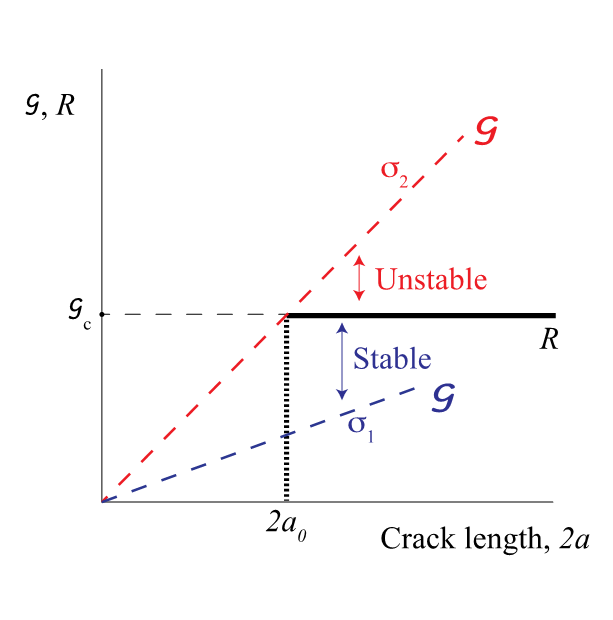
Effect of size of defect on energy release rate, G
The bigger the defect, the greater the energy release rate
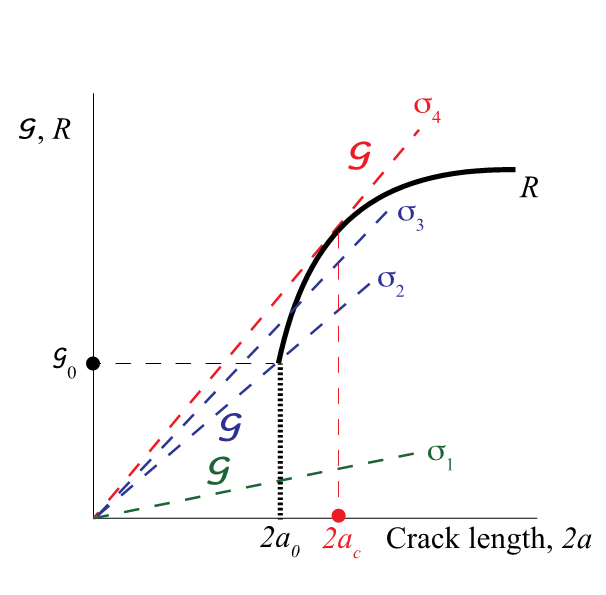
Case 2: R grows with crack size
For applied σ1, crack = stable
At σ2 → cracks starts growing but stops as rate of growth of R > G
At σ3 → crack propagates further but stops immediately as rate of growth R > G
At σ4 ( critical stress at which crack = unstable) → crack unstable as G grows faster than R.
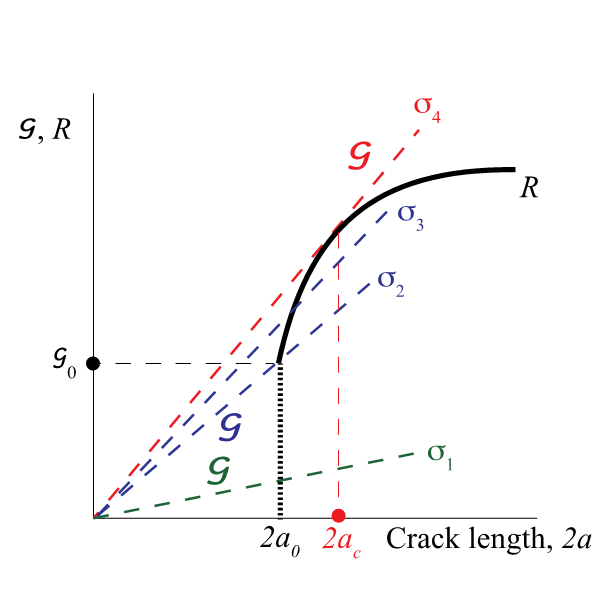
Types of fracture in polycrystalline materials:
Transgranular/intragranular
Intergranular
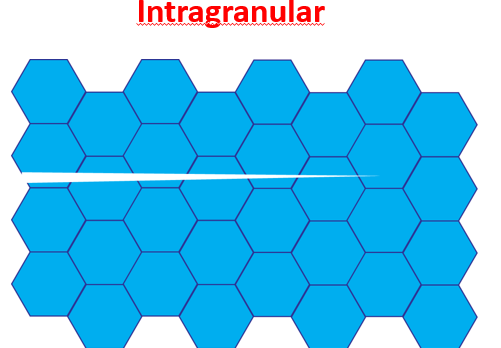
Transgranular/intragranular fracture
Crack propagates across grains
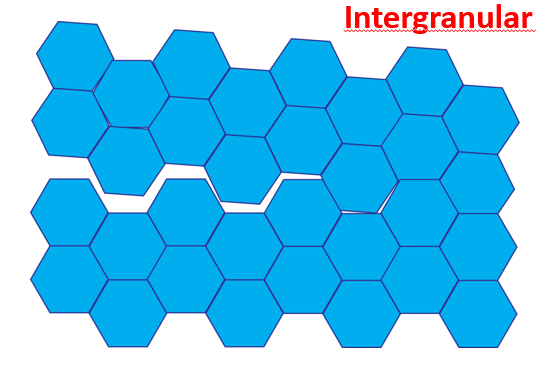
Intergranular
Crack propagates along grain boundaries
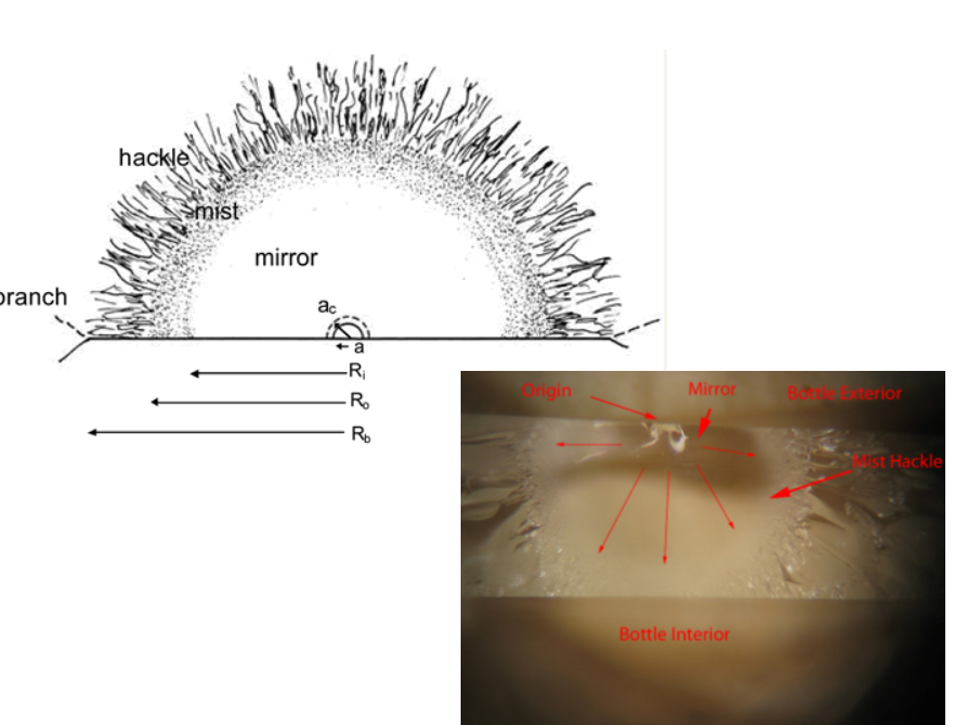
3 zones in fracture surfaces
Mirror
Mist
Hackle
Mirror
smooth regions surrounding + centred on fracture origin
Mist
Markings on surface of accelerating crack close to term velocity
First has misty appearance
As v increases, fibrous texture, elongated in direction of cracking
Hackle
A line on surface, running in local direction of cracking
separating parallel but noncoplanar portions of crack surface
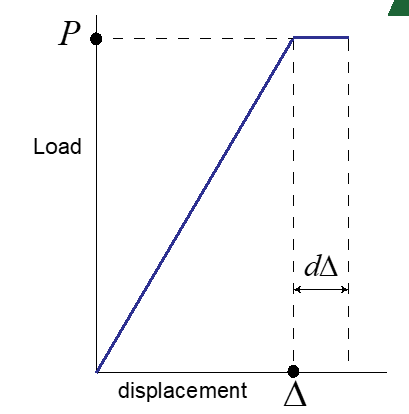
Load control
If the thickness of the sample is B, dA=Bda
Then
G=1/B (dUE/da) at constant P=P/2B (d∆/da) at constant P

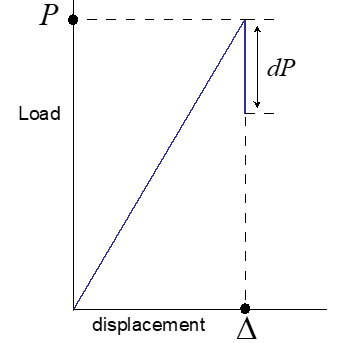
Displacement control
Recording how load changes as crack grows
G=-1/B (dUE/da) const∆=-∆/2B (dP/da) const∆
B = thickness
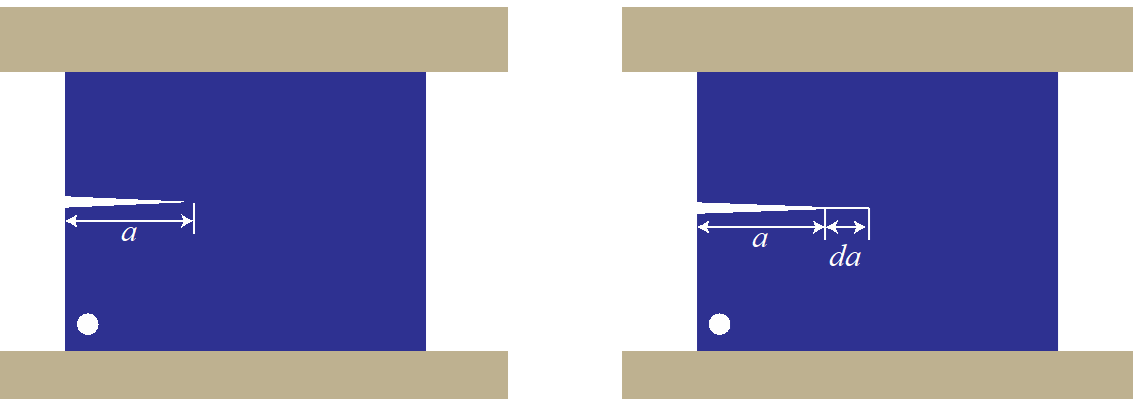
Compliance
Inverse of stiffness
Eqn for Compliance
∆/P
∆ = displacement
P = load
Equation for G in load/ displacement control
